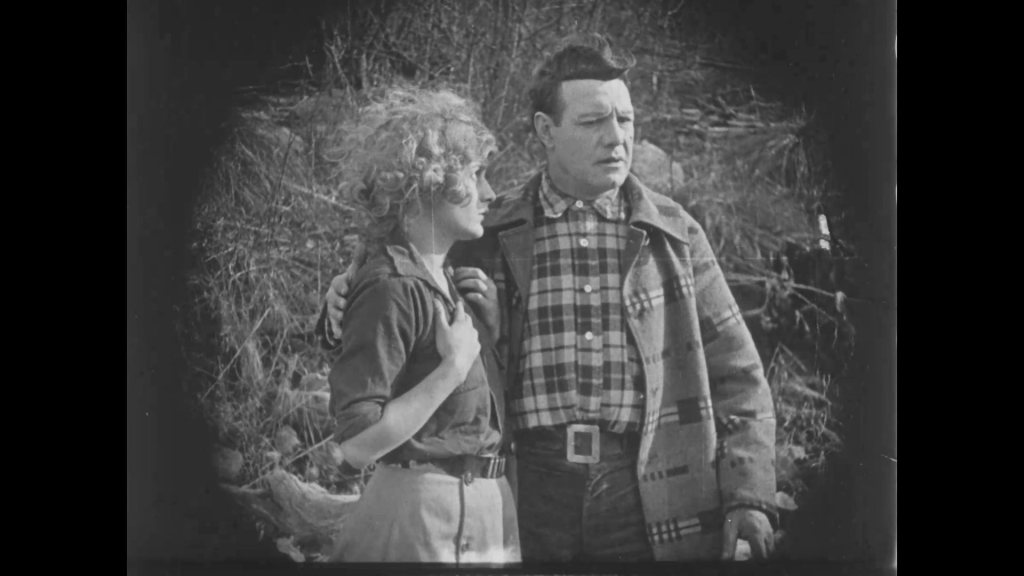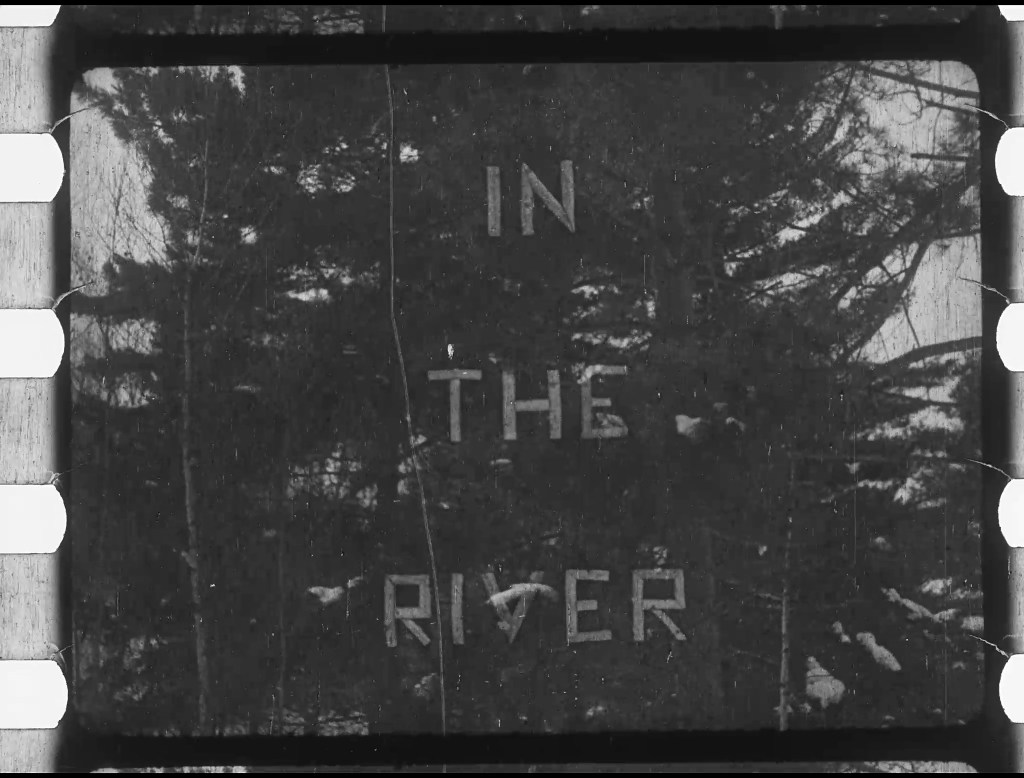After being lost and unseen for the last 100 years, “In the River,” a movie by Augusta-based producer, director and actor Edgar Jones, will make its return to the screen in the same spot it premiered in 1920.
The silent film was first shown on Aug. 12, 1920, at the Colonial Theater in downtown Augusta, likely to more than 1,000 viewers, many of whom were in the film as extras or knew someone who was.
Shot on the Kennebec River, which flows past the Colonial Theater, as well as the Cobbosseecontee Stream in Gardiner, the action-packed drama tells the story of a mail-order bride who travels to the woods of Maine to meet her prospective husband but instead finds trouble.
The film, starring Jones, Evelyn Brent and Cartlon Brickert, then traveled the silent film circuit, likely being played at theaters around the country.
Then it disappeared.
Until Ed Lorusso, a silent film expert and restorer in Belgrade, found the film buried within a private film collection at the Library of Congress. It had been filed under the title, “Into the Current.”

Lorusso had asked a Library of Congress librarian to search for anything made by Edgar Jones. That search came upon “Into the Current” which, upon viewing, Lorusso confirmed was the missing film.
The film will make its re-premiere at 2 p.m. Saturday, at the Colonial Theater at 139 Water St. in Augusta. Tickets are $10 and the show will include not just the 20-minute-long film but also two other Jones films, also shot in Maine, “Cupid, Registered Guide,” and “Caught in the Rapids.” Tickets are available through the Colonial’s website.
The silent films will be accompanied by live music as they would have been back in their heyday; New Hampshire pianist Jeff Rapsis, who has extensive experience accompanying silent films, will perform.
Kennebec Journal accounts from the 1920s say filming of “In the River” took place on the Kennebec River and Cobbossee Stream. Officials opened a gate on a Cobbossee Stream dam to create a set of rapids for filming. Footage was also shot, Lorusso believes, in Gannett Woods in Augusta, where a fake lumber camp and cabin were assembled for the filming.
Lorusso said the newspaper’s account of filming described the dam gate being opened and then, in a miscue, being closed too soon, allowing the rapids to subside before the shot was finished, and forcing them to shoot the whole scene over again.
Jones, who setup his own film studio in Augusta in 1919, made 25 two-reel “north woods” films from 1919 to 1921, before he was forced out of his own company. It went out of business just six months later.
Lorusso isn’t sure how or why Jones ended up in Augusta. But he brought a company of actors and film technicians with him; they all lived together at 129 Sewall St., in Augusta, and made films year-round.

For a brief period, Lorusso said, Augusta was a filmaking center for all of New England. Because he had his own company including actors at the ready, Jones was able to produce numerous films. Lorusso said his films tended to use locals as stand-ins and for small parts. That made the films very popular when they debuted at the Colonial, which at the time had 1,000 seats.
“It was standing-room only, everybody went, because if you weren’t in the film, you knew somebody who was,” Lorusso said. He said the grandchildren of one of the local actors in the films come to all of their showings. Five of Jones’ films survived; the rest remain missing.
Jones’ film company going out of business pretty much ended Augusta’s filmmaking period, and within a few years most movie making moved to Hollywood.
Lorusso said Jones’ films were known for having solid plots and stories and a little of everything. They included comedies and dramas, all filled with action shot in Maine.
Cathy Milojevic-Kaey, director of the Colonial Theater, said the Augusta theater originally showed only silent films from 1913-29, when it was upgraded to be able to show films with audio.
The theater is still undergoing renovations and the building, which has no heating or cooling systems, is not yet fully operational. It is able to host events, especially in the spring and fall when temperatures are not as challenging as summer and winter.

A few new items funded by a $30,000 Stephen and Tabitha King Foundation grant are expected to be ready for Saturday’s showing of “In the River,” including a new projector, audio system and a popcorn maker. The grant will also pay for some lighting.
“We’re still waiting on the lighting, which has been backordered, but we are excited to test out the new projector and speakers and to offer guests fresh-popped popcorn,” Milojevic-Kaey said. “We believe the Colonial is the perfect venue for the re-premiere of ‘In the River,’ since this is the venue where it originally premiered and since it was shot locally.”
Additionally, Peter Flynn, a documentary filmmaker, will be gathering material for an upcoming film on the revitalization of old movies.

We invite you to add your comments. We encourage a thoughtful exchange of ideas and information on this website. By joining the conversation, you are agreeing to our commenting policy and terms of use. More information is found on our FAQs. You can modify your screen name here.
Comments are managed by our staff during regular business hours Monday through Friday as well as limited hours on Saturday and Sunday. Comments held for moderation outside of those hours may take longer to approve.
Join the Conversation
Please sign into your CentralMaine.com account to participate in conversations below. If you do not have an account, you can register or subscribe. Questions? Please see our FAQs.